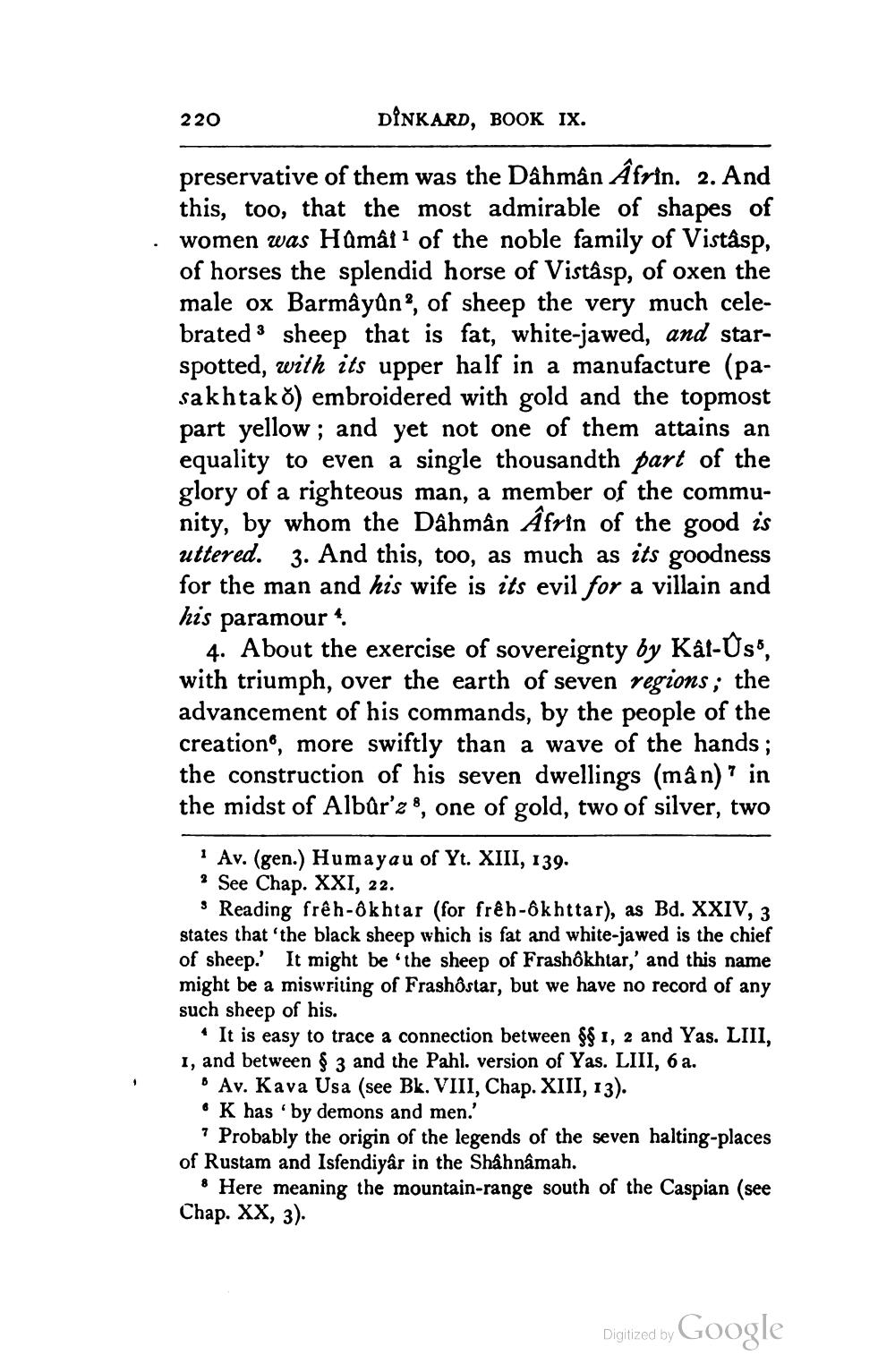________________
220
DİNKARD, BOOK IX.
preservative of them was the Dâhmân Afrin. 2. And this, too, that the most admirable of shapes of women was Hamâi? of the noble family of Vistasp, of horses the splendid horse of Vistâsp, of oxen the male ox Barmâyân?, of sheep the very much celebrated 3 sheep that is fat, white-jawed, and starspotted, with its upper half in a manufacture (pasakhtakö) embroidered with gold and the topmost part yellow; and yet not one of them attains an equality to even a single thousandth part of the glory of a righteous man, a member of the community, by whom the Dâhmân Afrin of the good is uttered. 3. And this, too, as much as its goodness for the man and his wife is its evil for a villain and his paramour 4.
4. About the exercise of sovereignty by Kat-Us“, with triumph, over the earth of seven regions; the advancement of his commands, by the people of the creation, more swiftly than a wave of the hands ; the construction of his seven dwellings (mân)? in the midst of Albür'z 8, one of gold, two of silver, two
* Av. (gen.) Humayau of Yt. XIII, 139. ? See Chap. XXI, 22.
s Reading frê h-Okhtar (for frèh-okhttar), as Bd. XXIV, 3 states that the black sheep which is fat and white-jawed is the chief of sheep.' It might be the sheep of Frashokhtar,' and this name might be a miswriting of Frashồstar, but we have no record of any such sheep of his.
• It is easy to trace a connection between $81, 2 and Yas. LIII, 1, and between $ 3 and the Pahl. version of Yas. LIII, 6 a.
• Av. Kava Usa (see Bk. VIII, Chap. XIII, 13). • K has 'by demons and men.'
? Probably the origin of the legends of the seven halting-places of Rustam and Isfendiyâr in the Shahnâmah.
* Here meaning the mountain-range south of the Caspian (see Chap. XX, 3).
Digitized by Google




